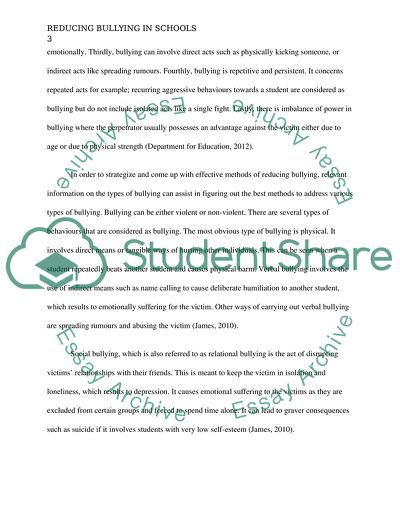Cite this document
(Reducing Bullying in Schools Essay Example | Topics and Well Written Essays - 1500 words - 1, n.d.)
Reducing Bullying in Schools Essay Example | Topics and Well Written Essays - 1500 words - 1. https://studentshare.org/psychology/1805319-how-and-to-what-extent-can-bullying-be-reduced-in-schools
Reducing Bullying in Schools Essay Example | Topics and Well Written Essays - 1500 words - 1. https://studentshare.org/psychology/1805319-how-and-to-what-extent-can-bullying-be-reduced-in-schools
(Reducing Bullying in Schools Essay Example | Topics and Well Written Essays - 1500 Words - 1)
Reducing Bullying in Schools Essay Example | Topics and Well Written Essays - 1500 Words - 1. https://studentshare.org/psychology/1805319-how-and-to-what-extent-can-bullying-be-reduced-in-schools.
Reducing Bullying in Schools Essay Example | Topics and Well Written Essays - 1500 Words - 1. https://studentshare.org/psychology/1805319-how-and-to-what-extent-can-bullying-be-reduced-in-schools.
“Reducing Bullying in Schools Essay Example | Topics and Well Written Essays - 1500 Words - 1”. https://studentshare.org/psychology/1805319-how-and-to-what-extent-can-bullying-be-reduced-in-schools.


